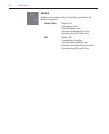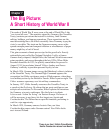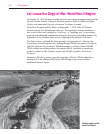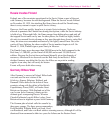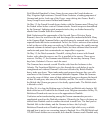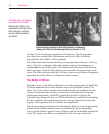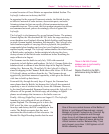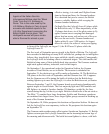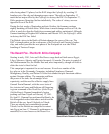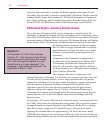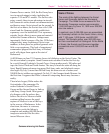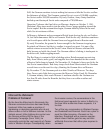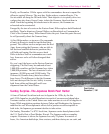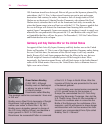
Chapter 7 The Big Picture: A Short History of World War II
127
eventual invasion of Great Britainan operation dubbed Sealion. The
Luftwaffe’s orders are to destroy the RAF.
In preparing for the expected German air attacks, the British develop
an effective network of radar stations, observation posts, and radio
listening stations tied into an equally efficient communications and
command structure. This system, the first modern integrated air defense
and command network, proves devastatingly effective against the
Luftwaffe.
The Luftwaffe is also hampered by several internal factors. The primary
German fighter, the Messerschmitt Bf 109, lacks the range necessary to
escort bombers over England, allowing British Spitfires and Hurricanes
to attack German bomber formations with impunity. The Luftwaffe also
lacks bombers capable of carrying effective payloads; this problem is
compounded when bombers and crew lost over England cannot be
replaced rapidly enough. The Luftwaffe underestimates the effectiveness
of British radar, and make a further mistake in believing they have
destroyed most of the British radar installations before launching the
major offensive in August.
The Germans start the battle in early July 1940 with numerical
superiority in both fighters and bombers. On July 4, German Stuka dive
bombers attack a column of nine British ships in the English Channel,
sinking five. Between July 10 and July 24, the Luftwaffe’s effort is
aimed at shipping in the Channel. Both sides suffer losses: 48 RAF and
93 Luftwaffe planes are blown from the sky. The Germans do not
aggressively push their numerical superiority, which gives the British
vital time to build up their forces.
From mid-July through the early days of August, the Germans lose
more planes than the British, but because the Luftwaffe has numerical
superiority a war of attrition in the sky favors the Germans. However,
by the time Reichsmarshal Hermann Goering can get the Luftwaffe’s air
offensive off the ground, the British enjoy an advantage in fighter
planes
an advantage that increases as the battle wears on.
Finally, Adlertag (Eagle Day) arrives on August 13. The Luftwaffe
launches its twice-delayed all-out air offensive
against England. The German goal is to drive the
RAF out of the skies over southern England in
four days and destroy the RAF completely in four
weeks. The British recognize that they must
maximize the effectiveness of their resources. Air
Marshal Sir Hugh Dowding decides that the most
One of the non-combat heroes of the Battle of
Britain is Lord Maxwell Beaverbrook, named
Minister of Aircraft Production by Churchill. By
simplifying fighter production and through
sheer force of will, Beaverbrook keeps British
fighter production ahead of losses during the
critical summer months. Between May 1 and
early August, more than 1,200 fighters roll off
British assembly lines.
“Never in the field of human
endeavor was so much owed by
so many to so few.”
Winston Churchill on the RAF’s
performance during the Battle of
Britain




